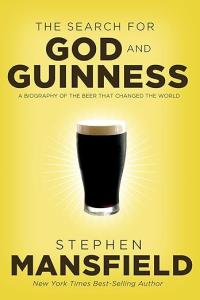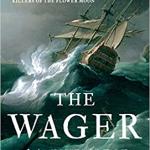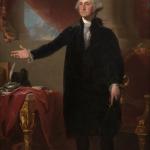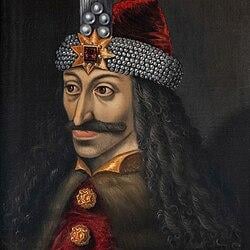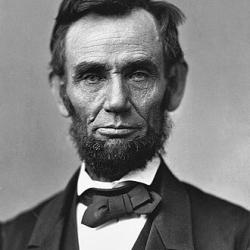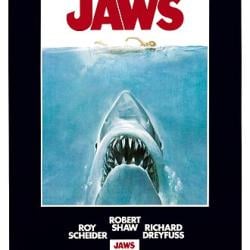Last Time on HOARATS
Pope Benedict XIV the 247th pope
( August 17, 1740 – May 3, 1758
17 years, 259 days)
Sits on the Throne of Peter
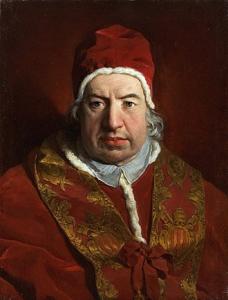
18th Century Popes
Popes 242 – 249 reigned on the throne of St. Peter.
0 Saint Popes
0 Blessed Pope
1 Servant of God Pope
7 Non – Sainted Popes
0 Anti – Popes
1 Interregnum
Thomas Wright suggests in 1750 that the Milky Way Galaxy in which we live is a disk-shaped system of stars with the Solar System near the centre.
and that is how we start out the
1750’s
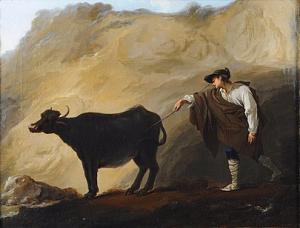
Jean Barbault paints Neapolitan Herder and a Cow leaving a Cave (1750)
(Musée des Beaux-Arts de Strasbourg, France)
- April 14
- A group of West African slaves, bound for the Americas, successfully overpowers the crew of the British slave ship Snow Ann, imprisons the survivors, and then navigates the vessel back to Cape Lopez in Gabon. Upon regaining their freedom, the rebels leave the survivors on the Gabonese coast.
- The Viceroy of New Spain, Juan Francisco de Güemes, issues a notice to the missionaries in Nuevo Santander (which includes parts of what are now the U.S. state of Texas, including San Antonio, and the Mexican state of Tamaulipas) to work peacefully to convert the indigenous Karankawa people to Roman Catholicism.
May 1, 1750 – George Frideric Handel begins the tradition of benefit performances of his oratorio Messiah at and for the Foundling Hospital in London.
- May 16 – Two weeks after police in Paris arrest six teenagers for gambling in the suburb of Saint-Laurent, rioting breaks out when a rumor spreads that plainclothes policemen are hauling off small children between the ages of five to ten years old, in order to provide blood to an ailing aristocrat. Over the next two weeks, rioting breaks out in other sections of Paris. Police are attacked, including one who is beaten to death by the mob, until order is restored and police reforms are announced.
- June 19 – At a time when mountain climbing is still relatively uncommon, Eggert Ólafsson and Bjarni Pálsson scale their first peak, the 4,892 foot (1,491 m) high Icelandic volcano, Hekla.
- July 28, 1750 – Johann Sebastian Bach, German composer (born 1685) dies.
- October 14 – The Louvre Museum is created in Paris four years after art critic Lafond de Saint-Yenne calls on the King to allow the display of the royal art collection to the general public. Abel-François Poisson, the Marquis de Marigny, arranges for the display of 110 of the Crown’s paintings at the Palais du Luxembourg.[23]
- November 18 – Westminster Bridge is officially opened in London.
- December 3 – What is described later as “The first documented presentation of a musical in New York” takes place one block east of Broadway, at the Nassau Street Theatre, when a resident company of actors stages The Beggar’s Opera.
- December 29 – Two physicians in Jamaica, Dr. John Williams and Dr. Parker Bennet, fight a duel “with swords and pistols” after having had an argument the day before about the treatment of bilious fever. Both are mortally wounded during the fight.
Treasure Island (1883) (originally titled The Sea Cook: A Story for Boys) is an adventure novel by Scottish author Robert Louis Stevenson, telling a story of “buccaneers and buried gold“. It is considered a coming-of-age story and is noted for its atmosphere, characters, and action.
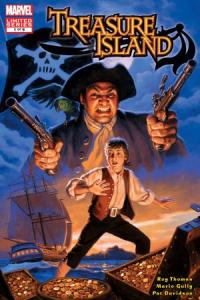
- January 7 , 1751– The University of Pennsylvania, conceived 12 years earlier by Benjamin Franklin and its other trustees to provide non-denominational higher education “to train young people for leadership in business, government and public service”. rather than for the ministry, holds its first classes as “The Academy and Charitable School in the Province of Pennsylvania” in Philadelphia.
- April 29, 1751 – The sport of cricket is first played in the American colonies, as a team of New Yorkers plays against a team of Englishmen and defeats them, 167 to 80, in a match in Greenwich Village
- May 11, 1751 – The Pennsylvania Hospital, first hospital in the American colonies, is chartered in Philadelphia by the Pennsylvania legislature, which grants the right to Benjamin Franklin and to Dr. Thomas Bond.
- 1751 – John Smith & Son‘s bookshop is established in Glasgow. It will claim to be the oldest surviving bookseller in the English-speaking world.
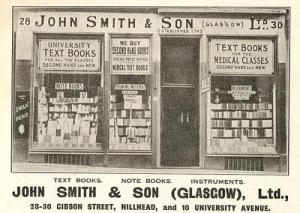
- 1751 – Denis Diderot publishes the Encyclopédie., general encyclopedia published in France most famous for representing the thought of the Enlightenment.
- 1752 – German Jesuit Fr. Ferdinand Steinmeyer begins his missionary work in Lancaster Penn. He served at St. Joseph and St. Mary parishes in Philadelphia before and during the American Revolution. He risked his life entering New York, where being a priest was a hangable offense prior to the Revolution, and he did so often under the guise of a farmer.- American Catholic History.
- January 14, 1752 – Indian layman and martyr Saint Devasahayam Pillai (April 23, 1712 – January 14, 1752) dies.
- October 19 1752 — In his Philadelphia newspaper, the Pennsylvania Gazette, Benjamin Franklin first describes the performance, in Philadelphia of the kite experiment that he had proposed in his 1750 book. The kite experiment, duplicates an experiment that shows that lightning and electricity are the same.
- June 7, 1753 – The British Museum is established in London, by Act of Parliament.
- August 30,1754 – New Hampshire settlers Susannah Willard Johnson and her family are taken hostage by the Abenaki Indians during an attack near Charlestown. Nine months pregnant at the time of their capture, Johnson gives birth two days later to a child, whom she names Elizabeth Captive Johnson. For the next two years, the family is held for ransom in Canada before she is released. In 1796, she will recount the story in a popular memoir, A Narrative of the Captivity of Mrs. Johnson.
- September 11, 1754– Anthony Henday, an English explorer, becomes the first white man to reach the Canadian Rockies, after climbing a ridge above the Red Deer River near what is now Innisfail, Alberta.
- 1754 – Pope Saint Leo the Great proclaimed a Doctor of the Church
- May 28, 1754 – French and Indian War: Battle of Jumonville Glen – The war begins when George Washington, 22, leads a company of militia from the Colony of Virginia, in an ambush on a force of 35 French Canadians. The French and Indian War (1754–1763) was a theater of the Seven Years’ War, which pitted the North American colonies of the British Empire against those of the French, each side being supported by various Native American tribes.
- March 12 ,1755– A steam engine is used in the American colonies for the first time as New Jersey copper mine owner Arent Schuyler installs a Newcomen atmospheric engine to pump water out of a mineshaft.
- 1755 – St. Dr. Alphonsus Liguori’s Uniformity with God’s Will (1755) is published. St. Alphonsus becomes a Doctor of the church in 1871.
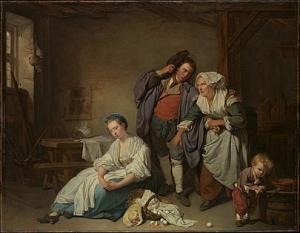
1756 – Broken Eggs, is a painting executed in 1756 by French artist Jean-Baptiste Greuze.
- January 27, 1756 – Wolfgang Amadeus Mozart was born in Salzburg, Austria.
- 1756- – Jeanne-Marie Leprince de Beaumont – “La Belle et la Bête” (“Beauty and the Beast“, abridged version, in Magasin des enfants, ou dialogues entre une sage gouvernante et plusieurs de ses élèves)
- 1756 – The Seven Years’ War (1756–1763) was a global conflict that involved most of the European great powers and was fought primarily in Europe, the Americas, and Asia-Pacific.
- April 16, 1757 – The works of astronomer Galileo Galilei espousing heliocentrism are removed (with the approval of Pope Benedict XIV) from the Index Librorum Prohibitorum list of books banned by Roman Catholic Church, along with “all books teaching the earth’s motion and the sun’s immobility”. Other works of heliocentrists Galileo, Nicolaus Copernicus, Johannes Kepler, Diego de Zúñiga and Paolo Foscarini remain on the list.
NEW POPE
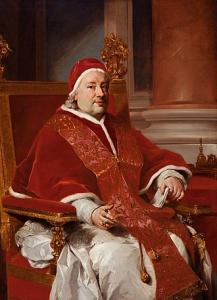
July 6, 1758 – Pope Clement XIII succeeds Pope Benedict XIV, as the 248th pope.
- By January 15, 1759 – Voltaire‘s satirical novella Candide, ou l’Optimisme is published simultaneously in five countries. Socrates (French: Socrate) is a 1759 French play in three acts written also by Voltaire.
- December 31, 1759- Arthur Guinness ( September c. 24, 1725 – January 23, 1803) was the inventor of Guinness beer, and founded the Guinness Brewery at St. James’s Gate. on this date.
We are used to preachers and to great noisy works for God. We are used to religion that is sometimes an escape from daily life and to faith as fixation on life in another world. What Arthur Guinness founded was a venture propelled by faith, yes—but by a kind of faith that inspires men to make their work in this world an offering to God, to understand craft and discipline, love of labor and skills transferred from father to son as sacred things. It was a venture of faith that took the fruit of the earth and, through study and strain, made of it something of greater value. Indeed, much of the great 250-year history of Guinness beer is a story in which wealth is gained through faith-inspired excellence and then used to serve others for the glory of God. This is what Arthur Guinness founded and this is the legacy Guinness beer still symbolizes to this day.
Stephen Mansfield, The Search for God and Guinness: A Biography of the Beer that Changed the World(2009) Thomas Nelson
1760’s
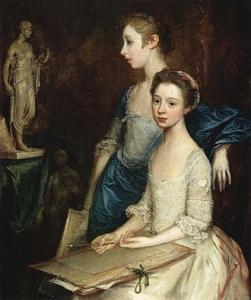
1760- Thomas Gainsborough The Artist`s Daughters, Molly and Peggy
- August 22, 1760 – Pope Leo XII, (b. Annibale Francesco Clemente Melchiore Girolamo Nicola Sermattei della Genga), Italian priest (d. 1829) is born.
- October 25, 1760 – George II of Great Britain dies; his 22-year-old grandson George, Prince of Wales, succeeds to the throne as King George III and reigns for 59 years until his death on January 29, 1820.
- September 19 1761 – Slavery in Portugal is abolished.
- March 17, 1762 – The first Saint Patrick’s Day Parade in New York City takes place in lower Manhattan, inaugurating an annual tradition; the Ancient Order of the Hibernians organization later becomes the sponsor of the event, which attracts as many a 300,000 marchers in some years.
- June 19, 1762 – Jean-Jacques Rousseau‘s The Social Contract (Du Contrat social, ou Principes du droit politique) and Emile, or On Education (Émile, ou De l’éducation), recently published in Amsterdam and The Hague respectively, are publicly burned in Paris.[2] They are also prohibited in Rousseau’s native Republic of Geneva.
- February 10, 1763– Seven Years’ War – French and Indian War: The Treaty of Paris ends the war, and France cedes Canada (New France) to Great Britain.
- July 9, 1763 – The Mozart family grand tour of Europe began, lifting the profile of child prodigy Wolfgang Amadeus.
- 1763 – The Turkish Embassy Letters are a letter collection of Lady Mary Wortley Montagu‘s reflections on her travels through the Ottoman Empire between 1716 and 1718. She collected and revised them throughout her life, circulating the manuscripts among friends, and they were first published in 1763 after her death.
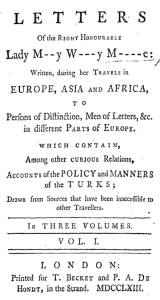
1764
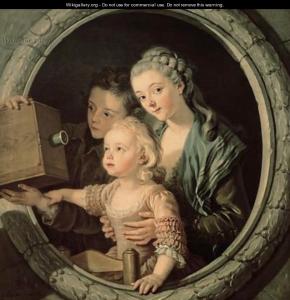
1764 Charles-Amédée-Philippe van Loo – The Magic Lantern
1764– John Hannon (or alternatively spelled “Hannan” in some sources) and the American physician Dr. James Baker started importing beans and producing chocolate in the Lower Mills section of Dorchester, Massachusetts.
1764 -The Beast of Gévaudan is the historic name associated with a man-eating animal or animals that terrorised the former province of Gévaudan (consisting of the modern-day department of Lozère and part of Haute-Loire), in the Margeride Mountains of south-central France between 1764 and 1767.
This is the first event in Jimmy Akin’s Mysterious Timeline.
March 15, 1764 – The day after his return to Paris from a nine-year mission, French explorer and scholar Anquetil Du Perron, who was not eaten by the Beast, presents a complete copy of the Zoroastrian sacred text, the Zend Avesta, to the Bibliothèque Royale in Paris, along with several other traditional texts. In 1771, he publishes the first European translation of the Zend Avesta.
April 5, 1764 – The Sugar Act is passed in Great Britain. This incident increased the colonists’ concerns about the intent of the British Parliament and helped the growing movement that became the American Revolution.
July 26, 1764 – In what is described 250 years later as “The first documented United States school shooting“, a group of four Delaware Indians invade a schoolhouse near what is now Greencastle, Pennsylvania and kill ten schoolchildren and their teacher, Enoch Brown. The massacre happens in the course of Pontiac’s War, as retaliation against white settlement of Indian lands in central Pennsylvania. One student, Archie McCullough, manages to escape the carnage; a memorial is erected 120 years later on August 4, 1884.
October 15, 1764 – English scholar Edward Gibbon conceives the idea of writing The History of the Decline and Fall of the Roman Empire, “as I sat musing amid the ruins of the Capitol“.
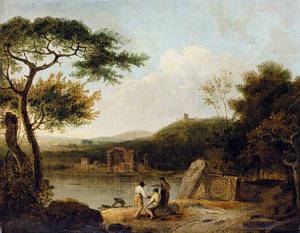
1765 –Richard Wilson – Lake Avernus I (approximate date)
1765 – The first chocolate factory in the Thirteen Colonies is officially established by Dr. James Baker at Dorchester, Massachusetts.
March 22, 1765– Royal assent is given to the Duties in American Colonies Act 1765, historically referred to as the Stamp Act, imposing the first direct tax levied from Great Britain on the thirteen American colonies, effective November 1. The revenue measure (which requires the purchase of a stamp to be affixed for validation of all legal documents, but also to licensed newspapers and even playing cards and dice) is made to help defray the costs for British military operations in North America, including the French and Indian War.
March 24, 1765 – Great Britain passes the Quartering Act, requiring private households in the thirteen American colonies to house British soldiers if necessary.
May 26, 1765 – During a stroll in the park “on a fine Sabbath afternoon” at Glasgow Green, Scottish engineer James Watt receives the inspiration that provides the breakthrough in his development of the steam engine; he recounts later that “The idea came into my mind, that as steam was an elastic body it would rush into a vacuum, and if a communication was made between the cylinder and an exhausted vessel, it would rush into it, and might be there condensed without cooling the cylinder… I had not walked further than the Golf-house when the whole thing was arranged in my mind.
1765 – Wolfgang Amadeus Mozart “God Is Our Refuge“, K.20
- February 15, 1766 – Protesting against the Stamp Act 1765, members of the New York City Sons of Liberty travel to Pennsylvania and set fire to a British supply of tax stamps before the stamps can be taken to distributors in the province of Maryland.
- March 18, 1766 – American Revolution: The British Parliament repeals the Stamp Act, which has been very unpopular in the British colonies; the persuasion of Benjamin Franklin is considered partly responsible. The Declaratory Act asserts the right of Britain to bind the colonies in all other respects.
- April 9, 1766
- African slaves are imported directly into the American colony of Georgia for the first time, as the sloop Mary Brow arrives in Savannah with 78 captives imported from Saint-Louis, Senegal.
- American botanist John Bartram completes his first exploration and cataloging of North American plants after more than nine months.
- April 2, 1767 – Suppression of the Jesuits begins, in the Spanish Empire and Kingdom of Naples.
- November 20, 1767 – The new American Colonies Act 1766, commonly called the “Declaratory Act”, goes into effect, virtually providing for Great Britain’s Parliament to govern lawmaking in 13 colonies and exacerbating tensions there.
- January 9, 1768 – Philip Astley stages the first modern circus, with acrobats on galloping horses, in London.
- August 26, 1768 – James Cook departs from Plymouth aboard HMS Endeavour on his first voyage of discovery.
- 1769-St. Junipero Serra founds his first mission in San Diego,California.
- February 2, 1769 – Pope Clement XIII dies, the night before preparing an order to dissolve the Jesuits.
NEW POPE
May 19, 1769– Cardinal Giovanni Vincenzo Antonio Ganganelli is elected as the 249th pope, succeeding the late Clement XIII and choosing to take the regnal name of Pope Clement XIV.
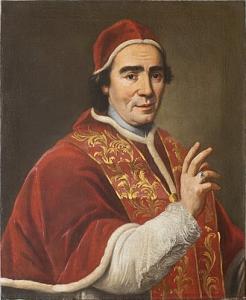
The Decade of Revolution Begins
- February 22, 1770 – Christopher Seider, an 11-year-old boy in Boston in the British Province of Massachusetts Bay, is shot and killed by a colonial official, Ebenezer Richardson. The funeral sets off anti-British protests that lead to the massacre days later.[3]
- March 5, 1770– Boston Massacre: Eleven American men are shot (five fatally) by British troops, in an event that helps start the American Revolutionary War five years later.
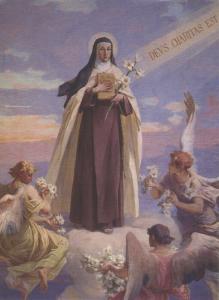
Teresa Margaret of the Sacred Heart, O.C.D. (15 July 1747 – 7 March 1770) was canonized March 19, 1934 by Pope Pius XI. She was known for her mystical gifts.
“Knowing that a bride cannot be pleasing to her spouse unless she endeavors to become what he wishes her to be … I will always think of my neighbors as beings made in your likeness, produced by your divine love, redeemed at the price of your precious Blood, looking upon them with true Christian charity, which you command. I will sympathize with their troubles, excuse their faults, always speak well of them, and never willingly fail in charity towards them in thought, word, or deed.”
God is Love (1964 edition)
- March 26, 1770 – First voyage of James Cook: English explorer Captain James Cook and his crew aboard HMS Endeavour complete the circumnavigation of New Zealand.
- July 12, 1770 – The word kangaroo derives from the An Guugu Yimithirr word gangurru, referring to eastern grey kangaroos. The name was first recorded as “kanguru” in an entry in the diary of Sir Joseph Banks; this occurred at the site of modern Cooktown, on the banks of the Endeavour River, where HMS Endeavour under the command of Lieutenant James Cook was beached for almost seven weeks to repair damage sustained on the Great Barrier Reef. A kangaroo was shot and exhibited to the Western world by another member of the Cook crew John Gore,
- 1770 Guillaume Thomas Raynal’s History of the Two Indias is published. The book is an encyclopaedia on commerce between Europe and the Far East, Africa, and the Americas. Raynal’s idea was to write a history of European enterprises in the East Indies and the New World, having observed the influence of the great explorations on European civilisation. The Histoire des deux Indes filled a public need for knowledge in the Age of Enlightenment, answering questions that preoccupied the minds of those in the late 18th century, around the time of the French Revolution.
- 1770 – The first version of The Basilica of Saint Louis, King of France has its groundbreaking.
- September 8, 1771– In California, Fathers Pedro Cambon and Angel Somera found Mission Vieja, later called, Mission San Gabriel Arcángel, in what is now San Gabriel, California.
- 1771 – In 1771, John Wesley formally authorized Methodist women to preach in public. This included Sarah Crosby ( October 6, 1729 – October, 29, 1804) She is considered to be the first woman to hold this title of a Methodist preacher.
- July 13, 1772 – The second voyage of James Cook departs from Plymouth on Captain Cook’s new ship, HMS Resolution and the companion ship HMS Adventure in an attempt to prove the existence of an uncharted continent even further south than New Zealand.
- January 1, 1773 – The hymn that becomes known as Amazing Grace, at this time titled “1 Chronicles 17:16–17”, is first used to accompany a sermon led by curate John Newton in the town of Olney, Buckinghamshire, England.
- January 17, 1773 – Second voyage of James Cook: Captain Cook in HMS Resolution (1771) becomes the first European explorer to cross the Antarctic Circle
- July 21,1773 – Under pressure from the Bourbon courts, Pope Clement XIV suppresses the Society of Jesus (brief Dominus ac Redemptor). Joseph II, Holy Roman Emperor, expels the order from his territories.
- December 16, 1773 – Boston Tea Party: A group of American colonists, dressed as Mohawk Indians, steal aboard ships of the East India Company and dump their cargo of tea into Boston Harbor, in protest against British tax policies.
- 1773- The Plays of Shakespeare with the Corrections and Illustrations of Various Commentators (10 vols., 1773) edited by Samuel Johnson and George Steevens.
Johnny Tremain is a work of historical fiction written in 1943 by Esther Forbes that is set in Boston prior to and during the outbreak of the American Revolution.
The book won the 1944 Newbery Medal and was believed to be “among the 20 best-selling children’s books of the 20th century.” It was estimated to be the 16th-bestselling children’s paperback book as of the year 2001 in the United States, according to Publishers Weekly. In 1957, Walt Disney Pictures released a film adaptation, also called Johnny Tremain.
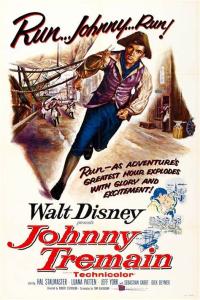
- November 20, 1774– Daniel Boone retires from the Virginia colonial militia in order to devote his full time to establishing a settlement in Kentucky.
Next Time on
HOARATS
1775 Was a Heck of a Ride Around the Sun |
A look back at the years 1775, 1785
To Understand
What I love and How I Write About History
Hit the Link Above.
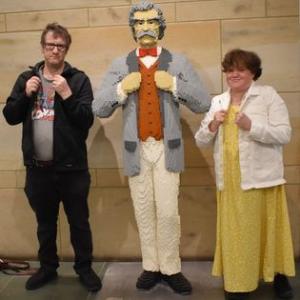
To understand about this particular series I’m writing about, please read
The Catholic Bard’s Guide To History Introduction
And to view a historical article click on


